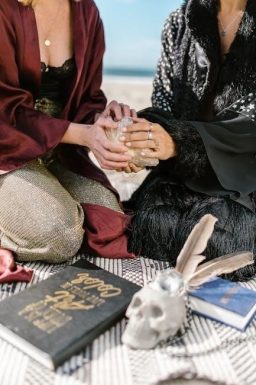The Witches by Roald Dahl is a captivating tale of a boy and his grandmother outsmarting evil witches. The PDF version offers convenient access to this beloved story.
What is “The Witches”?
The Witches is a captivating tale by Roald Dahl about a young boy and his wise grandmother who uncover a sinister plot by real witches. These witches, disguised as ordinary women, seek to eliminate children using a potion called Formula 86 Delayed-Action Mouse-Maker. The story blends humor, suspense, and timeless themes of good vs; evil, making it a beloved classic for readers of all ages.
Key Themes in “The Witches”
Good vs. Evil is a central theme, as the story pits innocent children and their protectors against the malicious witches. Deception and disguise are also prominent, highlighting the dangers of appearances. The bond between the boy and his grandmother underscores the importance of family relationships. Additionally, the story explores themes of courage and the power of clever thinking to overcome adversity.
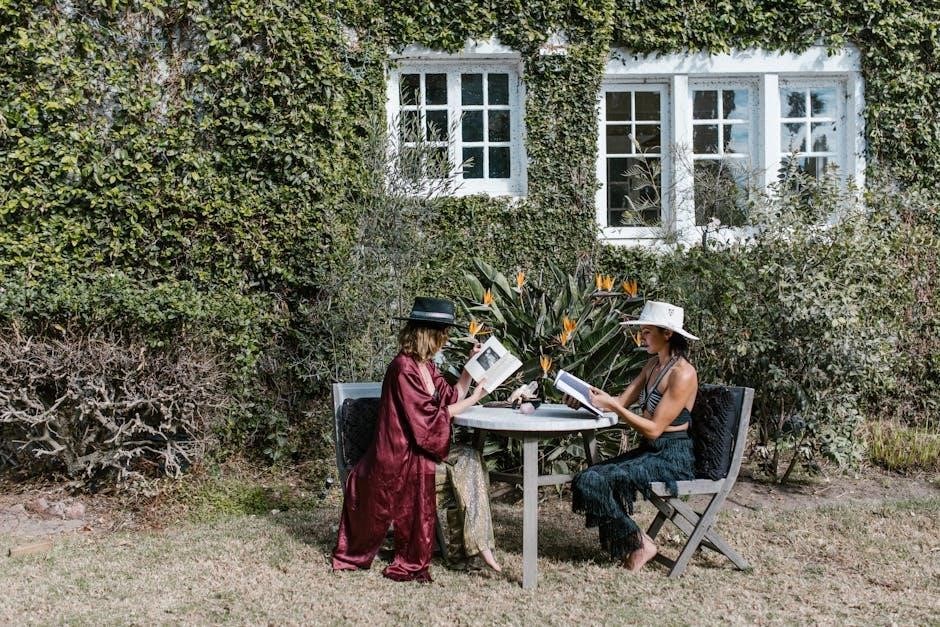
Background of the Story
The Witches is a darkly comedic tale by Roald Dahl, published in 1983, blending humor with eerie undertones, reflecting his childhood experiences and folklore influences.
The Author: Roald Dahl
Ronald Dahl, a British novelist, was born in 1916 in Llandaff, Wales. His early life, marked by tragedy and adventure, shaped his storytelling. Dahl served as a Royal Air Force pilot and spy during WWII, experiences that influenced his writing. Known for his dark humor and imaginative tales, he authored classics like Charlie and the Chocolate Factory and Matilda. His legacy endures as a beloved children’s author, celebrated for his unique voice and timeless stories.
The Main Characters
The story revolves around the boy narrator, whose name is never revealed, and his wise, kind grandmother. The antagonist is the Grand High Witch, the ruthless leader of all witches, who seeks to eliminate children. Other characters include the other witches, who are equally sinister and loyal to the Grand High Witch, adding depth to the tale’s dark humor and suspense;
The Setting of the Story
The story is set in a small, unnamed village and later in a grand hotel where the annual witches’ convention takes place. The village provides a peaceful backdrop for the boy and his grandmother’s life, while the hotel becomes a central location for the witches’ sinister plot. The contrasting settings highlight the shift from tranquility to danger, enhancing the story’s suspense and dark humor.

Main Characters in “The Witches”
The story features a young boy narrator, his wise and loving grandmother, the terrifying Grand High Witch, and a cast of wicked witches with unique traits.
The Boy Narrator
The boy narrator is a brave and resourceful young protagonist who drives the story forward. His curiosity and determination lead him to uncover the witches’ sinister plans. Despite his youth, he shows remarkable courage, especially when facing the Grand High Witch. His close relationship with his grandmother provides emotional depth, and his anonymity makes him relatable to readers of all ages.
The Grandmother
The grandmother is a significant figure in the story, offering wisdom and guidance to the young protagonist. Her extensive knowledge of witches stems from her Norwegian heritage and past encounters. She plays a protective role, educating the boy about the dangers of witches and preparing him to face them. Her strength and support are vital to the plot’s progression.
The Grand High Witch
The Grand High Witch is the terrifying leader of the world’s witches, known for her ruthlessness and hatred of children. Her grotesque appearance, including baldness and a toad-like face, reflects her evil nature. She devises the sinister Formula 86 to rid the world of children, showcasing her cunning and brutality. Her leadership and intelligence make her a formidable antagonist in the story.
Other Witches
Besides the Grand High Witch, the story features a coven of lesser witches, all disguised as ordinary women. These witches are equally vile, with warts, baldness, and a hatred for children. They are comedic yet fearsome, following the Grand High Witch’s orders blindly. Their ability to smell children and their supernatural powers make them dangerous, but their vanity and gullibility also reveal their weaknesses.
Plot Summary of “The Witches”
A young boy discovers witches plotting to rid the world of children, teams up with his grandmother, and faces a potion that transforms him into a mouse, leading to a suspenseful and humorous resolution.
The Boy’s Discovery of Witches
The story begins with a young boy learning about witches from his grandmother, who warns him about their evil ways. While staying in a hotel, the curious boy accidentally discovers a convention of witches, including the terrifying Grand High Witch. His eavesdropping leads to a shocking revelation about their sinister plans to eliminate children, setting the stage for a thrilling and dangerous adventure.
The Meeting of the Witches
The witches gather in a grand hotel for their annual convention, disguised as ordinary women to avoid suspicion. The Grand High Witch leads the assembly, revealing her latest scheme to rid the world of children. Her plan, involving a magical potion, sparks excitement among the witches, who eagerly await her instructions to carry out the evil deed.
The Potion: Formula 86 Delayed-Action Mouse-Maker
Formula 86 is the Grand High Witch’s most potent creation, designed to transform children into mice. Odorless and tasteless, it ensures a delayed reaction, allowing the witches to avoid immediate suspicion. When ingested, the potion triggers a horrifying metamorphosis, turning children into rodents. The boy and his grandmother witness its terrifying effects, spurring their determination to outsmart the witches and destroy the potion forever.
The Resolution and Final Confrontation
The boy and his grandmother devise a bold plan to destroy the witches. They sneak into the meeting, where the boy is caught but cleverly turns the Grand High Witch’s potion against her. Chaos ensues as witches are transformed into mice, and the hotel staff eliminate them. The boy and his grandmother escape, victorious, marking the end of the witches’ reign of terror.

Themes in “The Witches”
The story explores themes of good vs. evil, the importance of relationships, and disguise/deception, highlighting moral lessons through a magical and suspenseful narrative.
Good vs. Evil
The central theme of The Witches revolves around the clear distinction between good and evil. The witches, led by the Grand High Witch, embody pure evil, seeking to harm children mercilessly. Conversely, the boy and his grandmother represent goodness, displaying courage, kindness, and wisdom. This moral dichotomy drives the story, emphasizing the triumph of righteousness over wickedness through their bravery and cleverness.
The Importance of Grandmother-Grandchild Relationship
The bond between the boy and his grandmother is a cornerstone of the story. She teaches him about witches, fostering his curiosity and preparedness. Their relationship is built on trust, respect, and mutual affection, showcasing the depth of intergenerational connections. This bond not only drives the plot but also highlights the emotional support and wisdom that such relationships can provide, contrasting with the evil forces they confront.
Disguise and Deception
Disguise and deception are central to the witches’ tactics, as they conceal their true identities behind wigs, masks, and potions. The Grand High Witch even deceives her own kind, showcasing her cunning nature. The boy and his grandmother also use deception to outsmart the witches, highlighting the dual role of disguise in both evil and survival, making it a pivotal theme in the story.
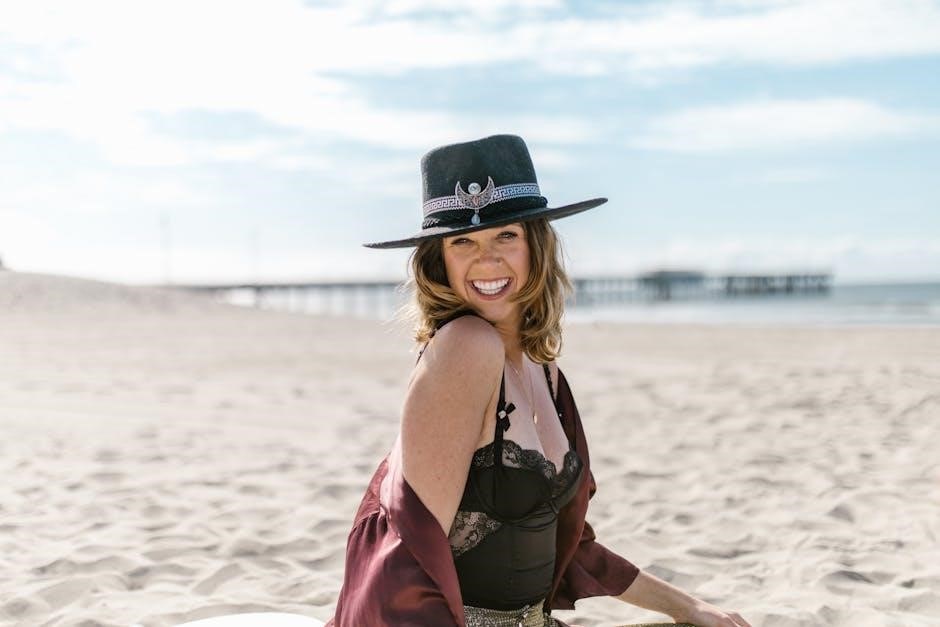
Reception and Reviews
The Witches PDF has received widespread critical acclaim for its engaging storytelling and dark humor, though it has faced controversy and bans due to its themes and language.
Popularity and Critical Acclaim
“The Witches PDF” has become a beloved classic, praised for its dark humor and imaginative storytelling. Critics applaud Roald Dahl’s ability to blend horror and comedy, making it accessible to both children and adults. The book’s unique characters and moral lessons have solidified its place as a bestseller, earning it numerous awards and a loyal readership worldwide.
Controversies and Bans
“The Witches PDF” has faced criticism for its portrayal of witches, sparking debates over misogyny and stereotypes. Some groups argue the book perpetuates negative attitudes toward women, leading to bans in certain schools and libraries. Despite this, the story remains widely read, with many defending it as a work of fantasy meant to entertain rather than offend.
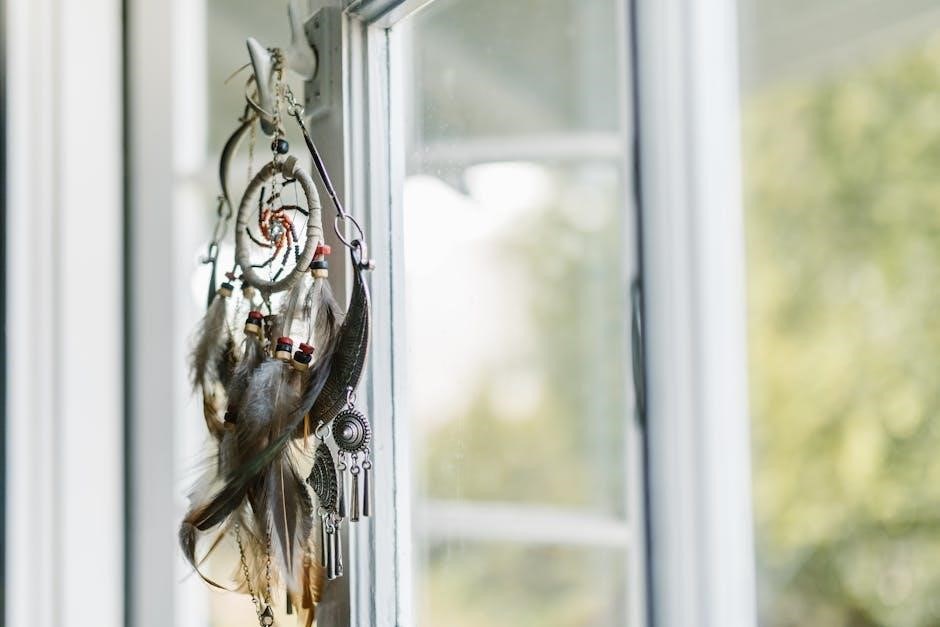
Availability of “The Witches PDF”
The “Witches PDF” is widely available online through platforms like Amazon, Google Books, and eBay. It can also be accessed via libraries or e-lending services.
Where to Find the PDF
The “Witches PDF” can be found on various online platforms such as Amazon, Google Books, and eBay. Many libraries also offer e-book lending services, including “The Witches.” Additionally, websites like Project Gutenberg or public domain repositories may provide free access, depending on regional copyright laws. Always ensure to download from reputable sources to avoid unauthorized or illegal copies.
Legal and Ethical Considerations
Downloading “The Witches PDF” may infringe on copyright laws, as Roald Dahl’s works are protected under intellectual property rights. Always purchase or borrow from authorized sources to support authors and publishers. Sharing or downloading unauthorized copies is illegal and unethical, potentially harming creators and the publishing industry. Respect copyright and choose legal options to access the book.

Educational Uses of “The Witches PDF”
“The Witches PDF” is a valuable educational tool for teaching reading comprehension, themes, and moral lessons. It engages students in discussions and activities, fostering critical thinking and creativity while exploring the story’s deeper meanings.
Teaching in Schools
The Witches PDF is widely used in schools to teach literature, promoting critical thinking and creativity. Teachers incorporate it into lesson plans to explore themes like courage and morality. The story’s imaginative plot and vivid characters make it ideal for engaging students in discussions, debates, and writing exercises, fostering a deeper understanding of storytelling and ethical dilemmas. The PDF format allows easy access and sharing for classroom activities.
Reading Guides and Worksheets
Reading guides and worksheets for “The Witches PDF” provide structured tools for comprehension and analysis. They include chapter summaries, discussion questions, and creative exercises to engage readers. These resources help students explore themes, characters, and plot developments in depth. Worksheets often feature vocabulary exercises, character maps, and essay prompts, making them invaluable for both independent study and classroom use.
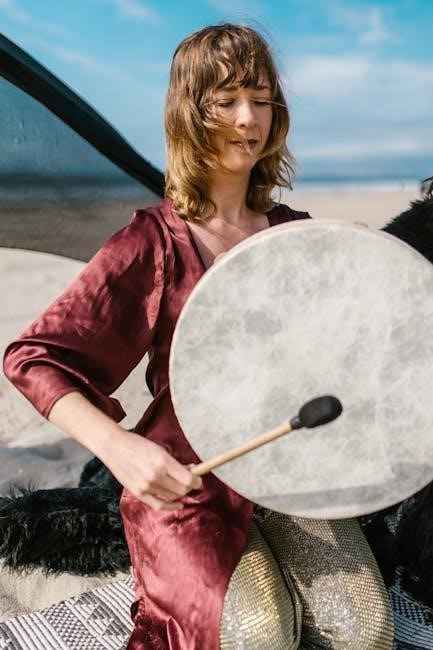
Differences Between the Book and Movie Adaptations
The book and movie adaptations of The Witches differ in tone, narrative depth, and character portrayals. The film often omits subplots and alters endings for cinematic appeal.
Key Changes in the Movie
The movie adaptation of The Witches differs from the book, with a softer tone and altered ending. The Grand High Witch’s appearance and demeanor were toned down, and the boy’s fate was changed to be more family-friendly. Some subplots, like the mice’s backstory, were omitted or modified for cinematic pacing. These changes aim to appeal to a broader audience while retaining the story’s core magic and suspense.
Reception of the Movie
The movie adaptation of The Witches received mixed reviews, with praise for its visuals and performances but criticism for lacking the book’s darker tone. Critics noted Anne Hathaway’s portrayal of the Grand High Witch as a highlight, while others felt the story’s depth and character development were compromised. Audiences generally enjoyed the film, appreciating its family-friendly approach and faithful nods to Roald Dahl’s original work.
Historical Context of Witches
Historical depictions of witches in folklore and mythology influenced Roald Dahl’s portrayal, shaping the story’s dark yet whimsical tone.
Witches in Folklore and History
Witches in folklore and history are often depicted as mysterious, evil beings with magical powers, reflecting societal fears and superstitions. Originating in medieval Europe, witchcraft was linked to heresy, leading to witch hunts and trials. The fear of witches was fueled by misogyny and misunderstanding, shaping their portrayal in literature and popular culture. Roald Dahl drew on these historical stereotypes, exaggerating them for comedic and dramatic effect in The Witches, blending folklore with modern storytelling.
Modern Perceptions of Witches
Modern perceptions of witches have evolved significantly, shifting from fear to fascination. Witches are now often seen as symbols of empowerment, feminism, and individuality. Popular culture, such as books and films, portrays witches in diverse ways, blending fantasy with realism. Roald Dahl’s The Witches reflects this shift, using humor and exaggeration to redefine the witch’s image for contemporary audiences, making them less feared and more fantastical.

Modern Interpretations and Relevance
The Witches remains a timeless tale, offering lessons on bravery, cleverness, and morality. Its themes of good vs. evil and family bonds resonate universally, making it a cherished read across generations.
Feminist Perspectives
Feminist interpretations of The Witches highlight the complex portrayal of female characters. The Grand High Witch embodies power but misuses it, sparking debates about women in leadership. The grandmother, a wise mentor, challenges patriarchal norms, while the witches’ disguises as ordinary women critique societal expectations. The story sparks discussions on gender roles, female agency, and the duality of strength and villainy in female characters.
Psychological Insights
The Witches offers profound psychological insights, exploring themes of fear, identity, and moral boundaries. The Grand High Witch symbolizes the dangers of unchecked power and manipulation. The boy’s bravery and the grandmother’s wisdom contrast with the witches’ deception, highlighting the struggle between innocence and corruption. Dahl’s portrayal of human nature and morality provides a deeper psychological layer to the story’s dark humor and fantasy elements.
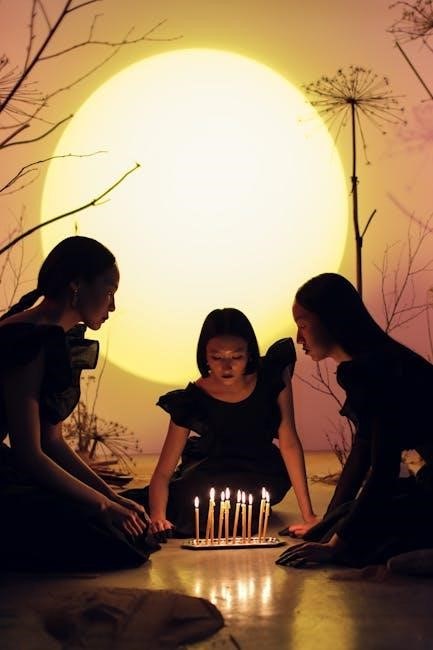
Why “The Witches” is a Classic
The Witches remains a classic due to its timeless themes, memorable characters, and Roald Dahl’s unique storytelling, blending dark humor with universal lessons that captivate readers of all ages.
Timeless Themes
The Witches explores universal themes like courage, kindness, and the battle between good and evil, resonating with readers across generations. Its lessons on bravery, cleverness, and the power of love remain relevant, making the story enduringly popular and thought-provoking for audiences of all ages.
Roald Dahl’s Writing Style
Roald Dahl’s writing style in The Witches is distinctively witty, imaginative, and engaging. His use of dark humor, clever wordplay, and vivid descriptions captivates readers. Dahl’s ability to blend lightheartedness with eerie themes creates a unique narrative voice, making the story both entertaining and thought-provoking. His storytelling is enriched by memorable characters and moral lessons, ensuring timeless appeal.
Reading Guides and Resources
Study guides and reading worksheets for The Witches provide detailed summaries and analysis tools, enhancing comprehension and engagement with the story’s themes and characters.
Study Guides and Summaries
Detailed study guides for The Witches offer chapter-by-chapter analysis, character insights, and themes. Summaries provide concise overviews of the plot, highlighting key events and character development. These resources are invaluable for students and educators, aiding in deeper understanding and facilitating class discussions. Many guides include discussion questions and activities, making them accessible for both individual and group learning. Available online, they enhance engagement with Roald Dahl’s timeless story.
Discussion Questions
Discussion questions for The Witches encourage critical thinking about the story’s themes, characters, and moral lessons. Questions might include: What motivates the Grand High Witch? How does the relationship between the boy and his grandmother influence the plot? What message does Roald Dahl convey about appearances and deception? These questions help readers analyze the story’s depth and complexity, fostering meaningful conversations about its themes and characters.
The Witches PDF concludes Roald Dahl’s darkly humorous tale, emphasizing bravery, wisdom, and the triumph of good over evil, leaving readers spellbound and reflective.
Final Thoughts on “The Witches”
“The Witches” remains a timeless tale of courage, wit, and the enduring battle between good and evil. Roald Dahl’s vivid storytelling captivates readers, blending dark humor with moral lessons. The witches’ sinister plans and the boy’s cleverness make for an unforgettable journey. This classic story continues to enchant audiences, proving its lasting relevance and appeal across generations. Its themes resonate deeply, leaving a lasting impression.
Recommendations for Further Reading
For readers who enjoyed “The Witches,” consider exploring other Roald Dahl classics like “Matilda” or “Charlie and the Chocolate Factory.” Fans of dark humor and fantasy might enjoy “Coraline” by Neil Gaiman or “The Golden Compass” by Philip Pullman. Additionally, delving into historical accounts of witch lore or literary analyses can deepen your appreciation for the themes explored in Dahl’s work.
